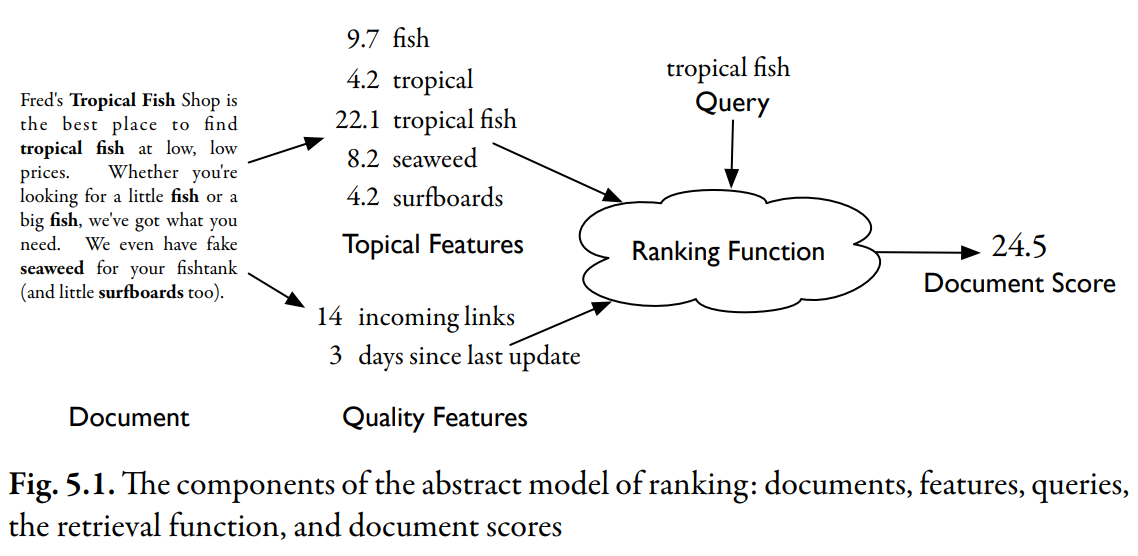Abstract Model of Ranking

Document
Documents are written in natural human languages. Because they are difficult for computers to analyze directly, the text is transformed into index terms or document features(is some attribute of the document we can express numerically).
Topical Features
topical features estimate the degree to which the document is about a particular subject. (discussed in chapter 4)
Quality Features
two possible document quality features.
- One feature is the number of web pages that link to this document.
- Another is the number of days since this page was last updated.
These two quality features don't address whether the document is a good topical match for a query, but they do address it quality.
For instance, a page with no incoming links that hasn't been edited in years is probably a poor match for any query.
Feature Function
Each of these feature values is generated using a feature function, which is a mathematical expression that generates numbers from document text.
Ranking Function
it takes data from document features combined with the query and produces a score.
Most reasonable ranking functions ignore many of the document features, and focus only on the small subset that relate to the query.
This fact makes the inverted index an appealing data structure for search.
Score
The final out of the ranking function is a score, which is a real number.
- High score means the system think the document is a good match for the query.
- Lower score means that the system thinks the document is a poor match for the query.
Search engines focus on identifying good features and scoring based on those features.